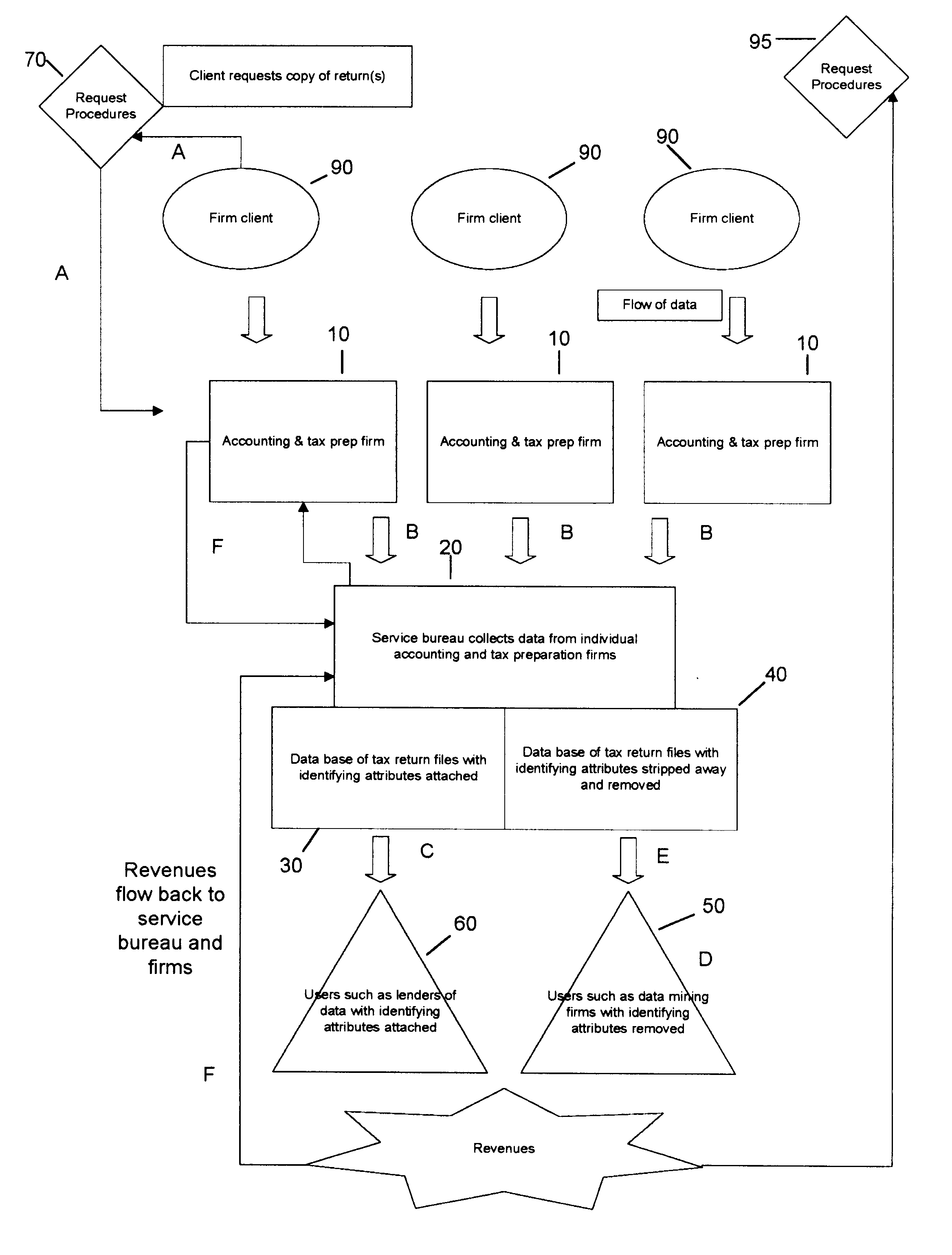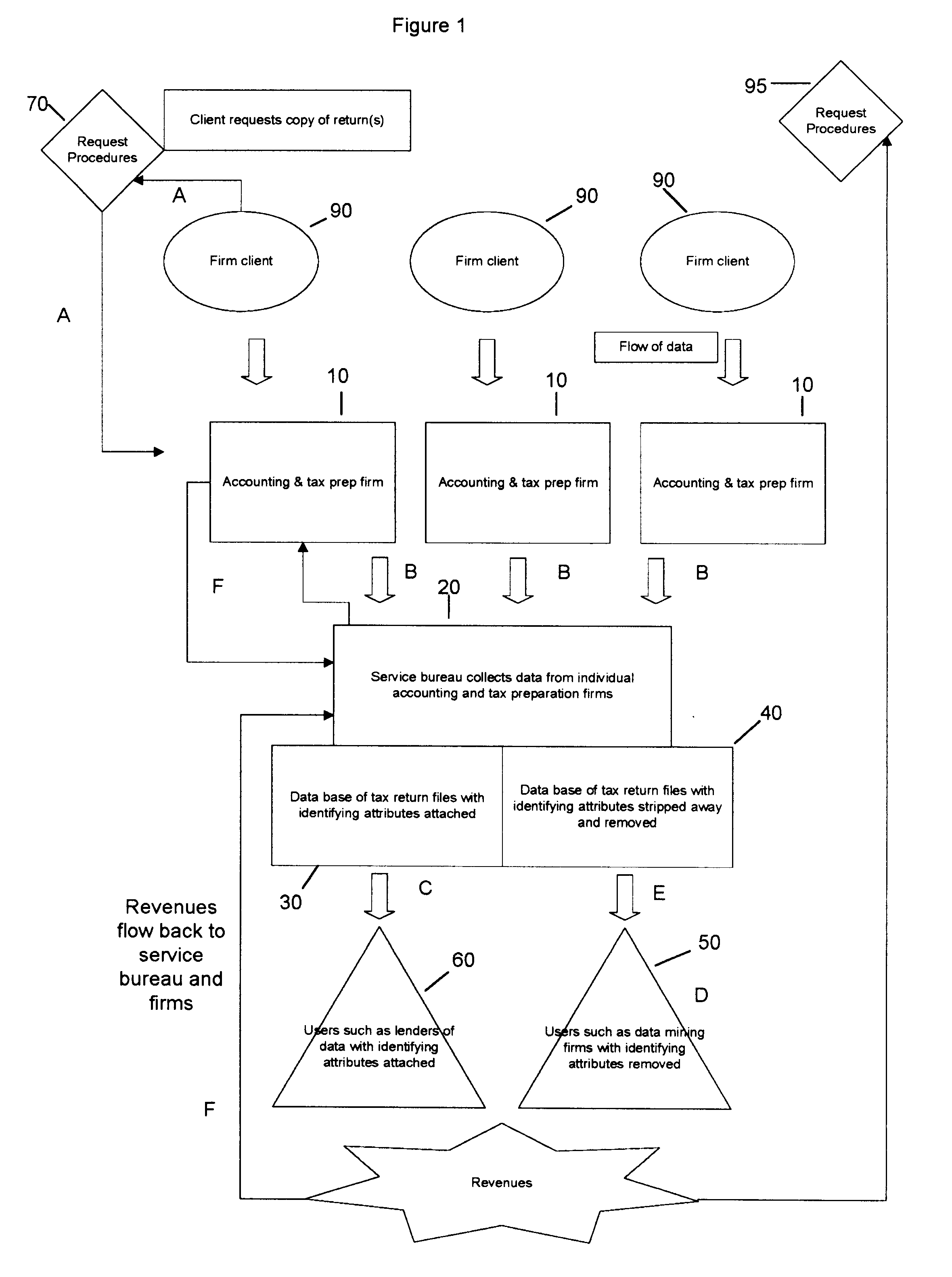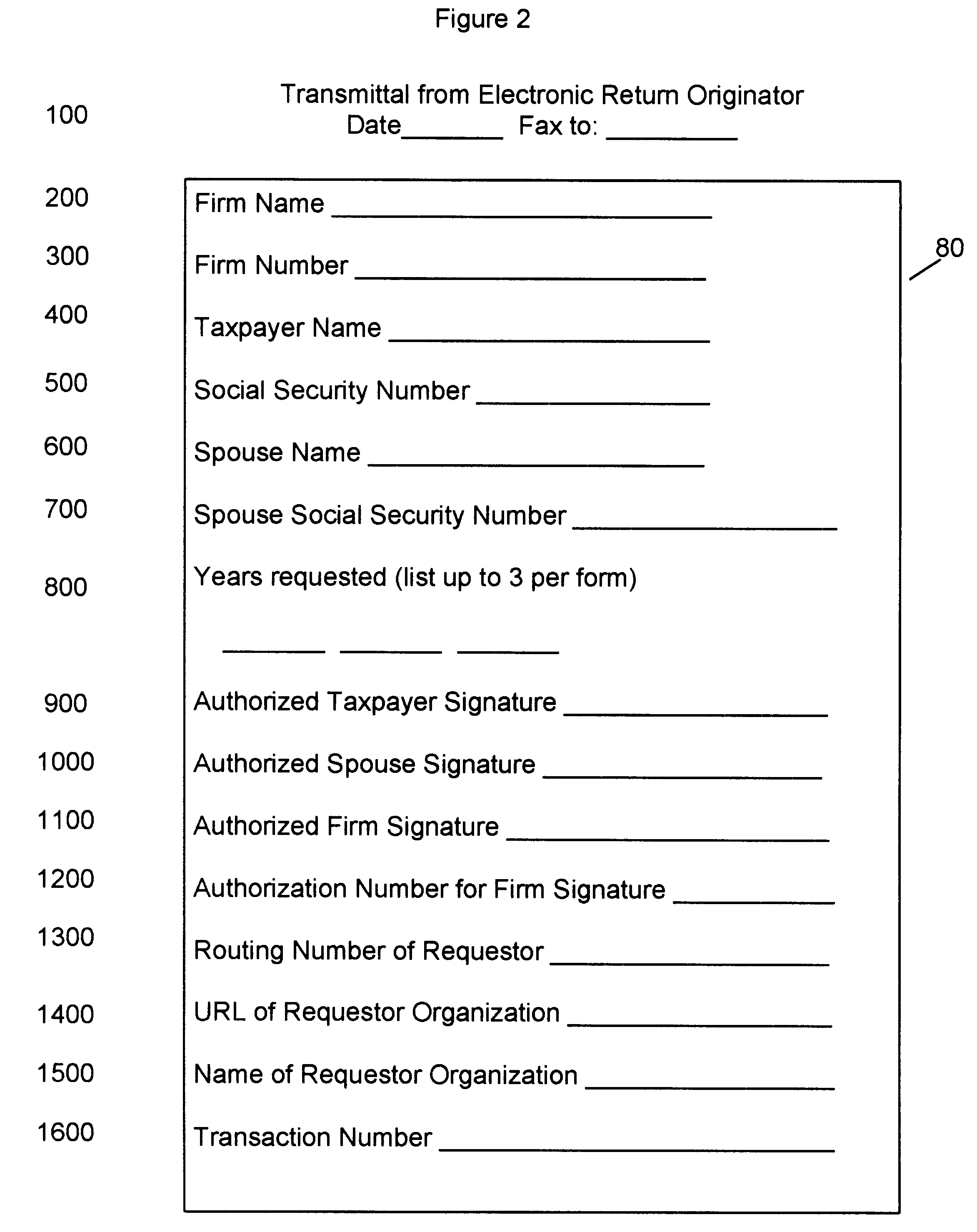The manual process of handling paper income tax returns is slow, costly, and places considerable burden on professional tax preparers because they must furnish clients with copies of returns who will in turn give them to their lender.
The Internal Revenue Service program was supposed to be expanded but to date is not widely used (and may not be used at all currently).
The reason for lack of acceptance of the Internal Revenue Service program is likely that they have very outdated equipment, an inability to respond quickly because of the sheer size of the organization, a
perception of distrust on the part of the public at large, and questions of whether they should be involved with a joint effort with private industry in such a manner at all.
So although the IRS could conceivably market its own data-base of information for
electronic data interchange and / or
data mining, it is likely that it would be unable to do so physically.
While the IRS method resembles the patent applied for in some limited respects, it only supplies partial tax return data drawn from IRS data.
Currently, not all tax returns can be electronically filed because the Internal Revenue Service is not equipped to receive all returns in electronic format.
If there is commercial potential for this discrete tax preparation firm owned data, then it has been grossly under-utilized by the profession at large.
It is clear that private industry (and particularly the accounting and tax preparation profession) has not made any connection to the potential improvements and benefits to the fields that this unutilized data may have.
Members of the profession as well as the profession itself are threatened with reduced revenues from traditional services, difficulty in adapting to rapid technological changes in the way the profession provides services, and even the type of services that are provided.
Thus the profession will have difficulty maintaining its position as the pre-eminent provider of accounting and tax services during a period of rapid technological change unless the profession embraces methods that improve, enhance, and utilize existing and new resources.
Traditional CPA tax services may be eroded by the entry of non-traditional providers of these services.
This risk is even greater for solo practitioners and small accounting and tax preparation firms as the accounting profession is faced with consolidating forces.
This trend toward large firms is arguably anti-competitive and could negatively affect how such services are priced and delivered.
Additionally, it may make it more difficult for lower socio-economic persons to obtain personalized assistance that they need.
Large consolidated accounting and tax firms would likely exacerbate the problem by further adding to depersonalization in an effort to
bolster profits.
A difficulty with actually implementing a direct electronic exchange of income tax data between firms and interested parties such as lenders or
data mining firms is that without some agreement or standard for
data format and a pre-determined arrangement for allocating revenues and expenses associated with such a
system, natural competitive forces would make differing systems for implementing electronic exchanges of data confusing.
The end result would be that either there would be several large companies dominating the arena or any attempts to implement a workable
system would be too fragmented.
However, the Jones et al patent does not teach storing information from the different borrowers in a central location to be used for statistical study purposes.
The Jones et al patent does not further teach stripping such information of identifiable characteristics so that third parties may use the information without compromising the identity of the individual borrowers.
However, the Zoffel et al patent does not teach stripping such information of identifiable characteristics so that third parties may use the information for statistical study without compromising the identity of the individual applicants.
However, the D'Agostino patent does not teach storing information from the different customers in a central location to be used for statistical study purposes.
The D'Agostino patent does not further teach stripping such information of identifiable characteristics so that third parties may use the information without compromising the identity of the individual customers.
However, the Dykstra et al patent does not teach stripping such information of identifiable characteristics so that third parties may use the information for statistical study without compromising the identity of the individual applicants.
However, the Longfield patent does not teach storing information from the different tax payers in a central location to be used for statistical study purposes.
The Longfield patent does not further teach stripping such information of identifiable characteristics so that third parties may use the information without compromising the identity of the individual tax payer.
However, the Davidson patent does not teach storing information from the different applicants in a central location to be used for statistical study purposes.
The Davidson patent does not further teach stripping such information of identifiable characteristics so that third parties may use the information without compromising the identity of the individual applicants.
Users of such tax information save costs for the same reasons.
There is a risk that large consolidated firms would eventually dominate this invention as the ease of using technology was met with sheer market size.
 Login to View More
Login to View More  Login to View More
Login to View More 


